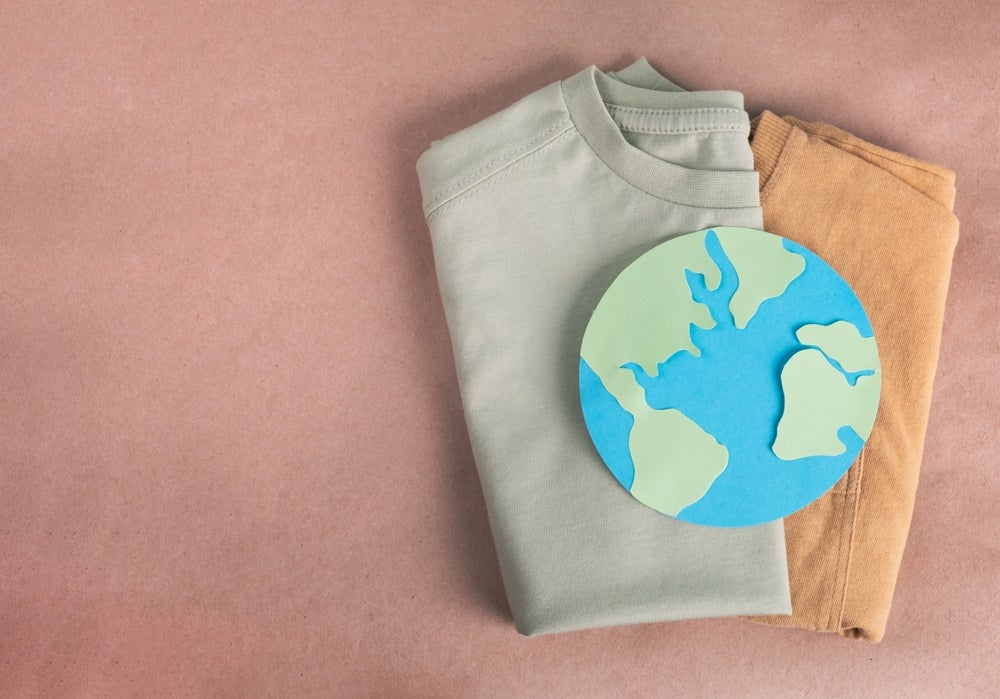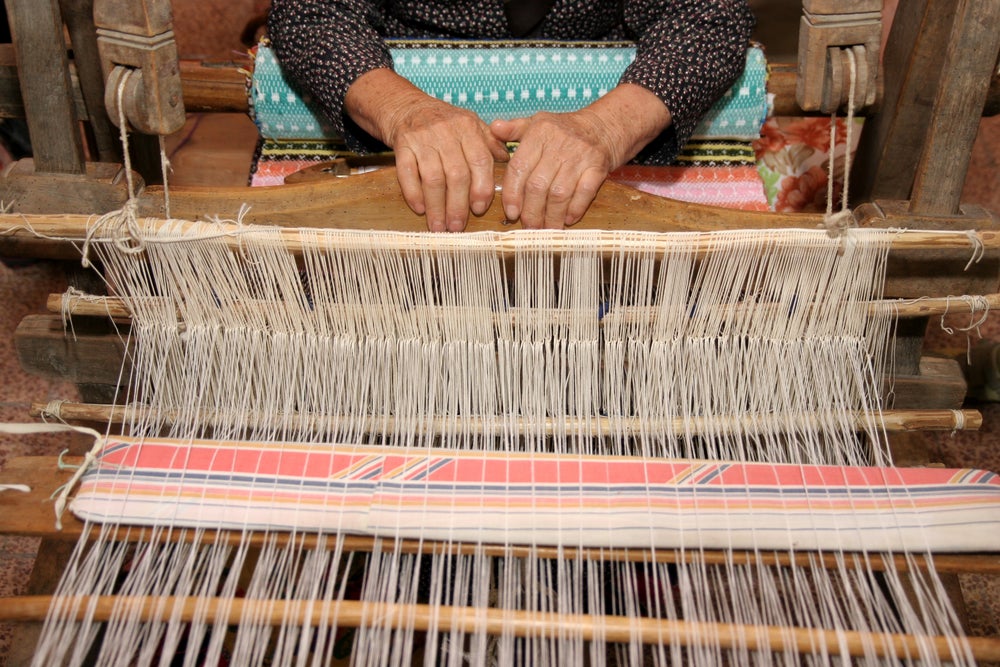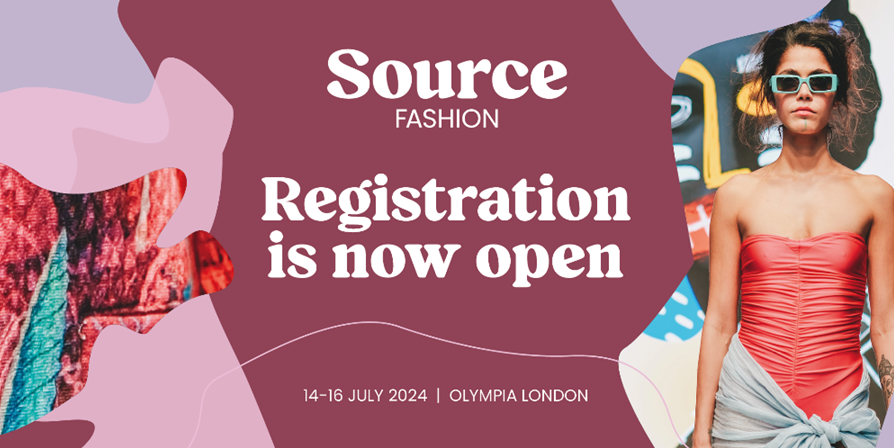
While the fashion industry recognises the need to move toward a more sustainable model – from sourcing to finished product – it’s often a difficult balancing act to embrace these issues and still deliver efficiency and profit. Industry executives suggest that starting small, setting realistic goals, shared experiences and creative solutions are all part of the shift.
Employing some 75m people globally, the apparel industry is also one of the most polluting in the world – and according to the United Nations contributes to 10% of global greenhouse gas emissions and 20% of global wastewater.
So not surprisingly any discussions about the future of sourcing also face the conundrum of how fashion businesses can embrace sustainable issues, but still deliver efficiency and profit.
“We’ve got to consider the people and the planet going forward, but we need to look at how we are going to achieve that, and consider the efficiency of how we are working,” design and brand consultant Della Nelson told delegates during a panel discussion at the recent Fashion SVP sourcing event in London.
So how do industry players juggle the two?
See Also:
The trick, according to Ginny Hutt, head of product at BHS International, the online offering of Qatar-based Al Mana Group, says is to start small and accept “you can’t do everything overnight.”
How well do you really know your competitors?
Access the most comprehensive Company Profiles on the market, powered by GlobalData. Save hours of research. Gain competitive edge.

Thank you!
Your download email will arrive shortly
Not ready to buy yet? Download a free sample
We are confident about the unique quality of our Company Profiles. However, we want you to make the most beneficial decision for your business, so we offer a free sample that you can download by submitting the below form
By GlobalDataOne problem, however, lies in the meaning of the word itself, says Michelle Mahlke, brand and luxury consultant and former managing director at Roland Mouret.
“Sustainability is a really broad word, and it comprises a more practical side in terms of the actual supply chain and the impact it has on the more ethical side. I think that sustainability means something different to everyone, and that can be somewhat problematic in terms of regulation, in terms of key milestones or accreditations.”
For startup brands, the best way to approach a sustainable vision is “to understand the impact of the particular product that you’re going to produce,” Mahlke says, noting that for existing brands, the challenge lies in identifying where to make the change.
“If you have a best-selling product line, how can you change that in a genuine way that doesn’t affect the design ethos, the wearability, the function? Or, do you approach it from a different way in terms of the new lines that you’re incorporating and try and achieve improvements?”
Another hurdle, Mahlke notes, is “this kind of fear of failure and this fear of being maybe attacked for not being perfect.” That makes people who are just starting out on that journey a little bit more fearful of raising their hand, she says.
“You need to aim high but be okay with getting a quarter or halfway there in that process of continual improvement” – Michelle Mahlke
“We need to get more comfortable with the idea of ambiguity and that there isn’t a moment that defines success, that it’s always going to be a process, and that the process is where you need to measure.
“You need to aim high but be okay with getting a quarter or halfway there in that process of continual improvement.”
Currently, that’s not something that people talk about a lot, she says. “People don’t like risk with business. They don’t like this idea of setting a goal and not reaching it. But with sustainability, we have to be comfortable with the knowledge that there’s no quick win because otherwise, we won’t get there. Success is progress.”
Hutt concurs: “The key is actually starting somewhere.”
At luxury label Vivienne Westwood, where the mantra is “Buy less, choose well, and make it last,” head of couture Brigitte Stepputtis explains the team took things gradually because, when dealing with sustainability, “it’s the only way you can.”
Even with something as seemingly simple as changing the packaging, “you have to use up the old one first in order not to create waste,” she explains.
Shared experiences
However, the biggest change Stepputtis says, came when the company “made everybody in charge.” This step saw employees – particularly the designers – made aware of the importance of sustainability so “when they design the collection they’re conscious of what they’re doing.”
“It’s a team of people with one aim as well working together which is united,” Nelson agrees.
Indeed, the sharing of knowledge and an increased sense of “openness amongst the industry, more collaboration” is what Hutt believes will help make a brand – whether it be high street or luxury – more attractive to consumers.
“Those that are doing it well, share their experiences,” she notes. “In terms of cost, we’ve ended up collaborating with other retailers because we’ve used [their] base test reports. I think a more open approach to that will help costs, commerciality, and efficiency.”
Internally, Mahlke believes it is important to identify problems in a business and bring it back to individual departments, particularly the C-suite, and ask “What can we do about this?”
She adds: “I know in a lot of cases, we end up with raw material and component excess. It’s incredibly important that the top – the CEOs, the owners, and the designers – care about these issues.
“With something like raw material excess, to know that you have it, to have it documented, to know how many metres of that fabric you have, and then actually have that in your mind to say, ‘We have to use 10% of our existing raw materials before we can order a new fabric’; I think they’re almost like games that you can play with yourself. It’s almost sitting there and saying that is part of the design criteria. A lot of very ingenious solutions come from constraints in design.
“You can’t let there be invisible parts of your business that you’re not acknowledging” – Michelle Mahlke
“You have to be aware of those areas. You have to do your audits. You can’t let there be invisible parts of your business that you’re not acknowledging. I think probably every fashion business, consumer business, has excess and has waste. It’s how you manage it: What are you doing? Do you really know what’s there?”
Stepputtis agrees “it does make you inventive,” explaining that at Vivienne Westwood’s World’s End shop – which she describes as her “laboratory” – excess fabric is used to make limited editions of garments.
“Sometimes it’s patchworks. On the other hand, you have fabrics where one-metre costs GBP200, so ten centimetres is still GBP20. We keep those and use them for decorations, embroidery, and so on, on our dresses. It’s a design principle.”
Cost communication
But along with the efforts required to operate in a more sustainable way, and manufacture more sustainable goods, brands must still maintain their own identity and, ultimately, make a profit.
“What we need to look at is how do we inform the customer that with a lot of sustainable issues on sourcing, the pricing will have to go up” – Della Nelson
“What we need to also look at is how do we inform the customer that with a lot of sustainable issues on sourcing, the pricing will have to go up a lot of the time on certain products,” Nelson states.
It’s vital that industry players communicate the reasons behind these price increases for products that are ethically sourced as cost continues to be a sticking point with consumers.
A report conducted by consulting firm EY earlier this year found that while ethics has increased in importance for UK shoppers when deciding on a purchase, price is still the most important factor.
Over two-thirds of UK consumers (68%) classed ethical behaviour as important when shopping, yet in practice, ethically sourced produce only came in the top three purchase considerations for 7% of UK consumers. Price was found to be the most important factor when purchasing a product for 78% of shoppers.
At Vivienne Westwood, Stepputtis explains every sustainable garment is clearly labelled with a note communicating its ethical credentials to customers.
“It could be that it’s hand-woven, Harris Tweed heritage fabric. It could be it’s organic cotton with a short supply chain so that the consumer knows what they’re getting. Apart from that, we do our normal markup, because the business side needs to be sustainable too.”
Hutt, meanwhile, says the importance of starting small extends to keeping customers informed.
“I wouldn’t be embarrassed about not doing everything and not being all things to all people from the start. You can’t be if you’re starting from scratch. I would advertise it with the product. I’d make sure that within my company, I would be talking about what I was doing and where I was falling short. I would be talking about what my next steps would be in order to combat that, and in order to promote what I was doing with regards to sustainability.”
At the luxury level, Mahlke believes there is an assumption that “certain boxes are being ticked” but notes that’s not always the case.
“I think it is to a certain extent, a false assumption. One of the biggest things that is important, no matter what kind of business you are – and where one of the biggest shifts can happen – is [that] you can’t do anything without your supply chain…you can make small shifts but fundamental to anyone is your product. If you can work hand-in-hand with your suppliers, with your mills, with your factories, and work on where you can make things better, more transparent, that will affect the other suppliers they’re working with but it also makes it easier for you to incorporate the reality of the story behind the goods.”
Equally, internal motivation is a “huge factor” in terms of making sure a brand’s team understands the importance of keeping the customer informed on its steps toward sustainability and why “sourcing with a conscience” is so crucial.
“If your teams are aware and knowledgeable it translates, it permeates through to the customer because they’re part of your touchpoint.”
The rise of rental
While some consumers may be happy to pay more for a garment that has been made in a greener way and from more sustainable materials, Nelson points out that a lot of the young market “tend to buy an outfit just for the ‘selfie’, and then throw it,” she says, referencing to the rise of ‘Instagram culture’ which sees users avoid being pictured wearing the same outfit more than once.
The trend feeds into the lure of the fast fashion market where consumers can purchase clothing that is more often than not limited to a single season and considerably cheaper in price – thus justifying only wearing the garment a handful of times.
“What we’ve got to try as an industry is to actually begin to show people that one garment instead of ten garments has got to have a following.”
She acknowledges it will “take a long time” but says industry players must find a way to encourage consumers to spend more money on garments, or save what money they do have toward a more sustainable item that might be more costly initially, but will ultimately last longer.
It should almost be like smoking, Hutt says. “When I was growing up, smoking was very commonplace, and actually now it really, really isn’t. Pushing an advert on a GBP1 bikini, or a GBP5 dress; that has to start becoming as abhorrent as perhaps smoking is to some people. That sounds quite extreme, but I don’t believe it is. I think that is only around the corner.”
“Pushing an advert on a GBP1 bikini, or a GBP5 dress; that has to start becoming as abhorrent as perhaps smoking is to some people” – Ginny Hutt
For Mahlke, the rise of the new circular economy business models such as clothes hire and rental services could be key.
It offers an “an alternative solution”, she says, in that ownership is not the only way to access luxury products or even a high street product that could be out of reach for some shoppers.
“Do we need to own everything?” she asks. “I think it scares luxury and brands because we’re always trying to sell more, but what if you can sell it again? That’s a different way of making a margin.”
Indeed, a report exploring the financial viability of circular business models in the fashion industry recently found they could drive a higher margin per garment compared to the current linear ‘take-make-waste’ process. Specifically, rental was found to be “very attractive” in higher-value segments.
While the rental market, in particular, may create logistical challenges like dry cleaning and the perception of sharing itself, Mahlke notes the attraction of renting among celebrities and other public figures.
“Most of what you see them wearing is borrowed. Most of what you see on Instagram is borrowed; they don’t own those items. You’re buying the experience of those clothes, and the more that we sell the idea and the experience around the product, I think the better you’re able to get to the consumer.”






